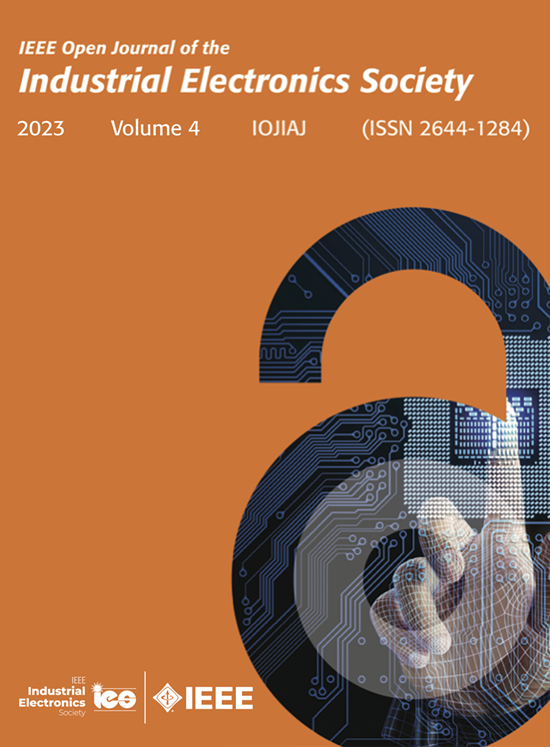基于sic - pwm的电机驱动中最佳开关频率的自适应确定:一种速度相关的铁芯损耗校正方法
IF 4.3
Q1 ENGINEERING, ELECTRICAL & ELECTRONIC
IEEE Open Journal of the Industrial Electronics Society
Pub Date : 2025-03-12
DOI:10.1109/OJIES.2025.3569349
引用次数: 0
摘要
本研究的重点是使用损耗最小化策略确定基于碳化硅(SiC)的电机驱动器在各种工作条件下的最佳开关频率。然后将结果与传统的硅绝缘栅双极晶体管(IGBT)系统进行了比较。该方法涉及对内部永磁同步电机中脉宽调制(PWM)电压引起的损耗进行全面的实时有限元分析,并与传统的正弦电流励磁馈电进行比较。该分析将Ansys Maxwell中的电磁场仿真与Ansys Twin Builder中的驱动系统控制算法集成在一起,确保了它们相互作用的准确表示。此外,为了更精确地估计铁芯损耗,提出了一种利用速度自适应铁芯损耗系数的方法,该方法考虑了可变频率。结果显示,当使用速度自适应系数与固定系数时,在磁芯损耗计算中存在高达80 %的显着差异。通过实时耦合仿真,可以有效地实现SiC mosfet更高的开关能力,在更宽的范围(10-50 kHz)内优化PWM频率,特别是在电动汽车的主驱动区域,与IGBT系统相比差异高达20 kHz。此外,在全球统一的轻型车辆测试周期中应用所提出的最佳PWM频率分布,与IGBT相比,SiC电机驱动器的累计能量损失减少了高达22美元。本文章由计算机程序翻译,如有差异,请以英文原文为准。
Adaptive Determination of Optimum Switching Frequency in SiC-PWM-Based Motor Drives: A Speed-Dependent Core Loss Correction Approach
This study focuses on identifying the optimal switching frequency for silicon-carbide (SiC)-based motor drives across a wide range of operating conditions using a loss minimization strategy. The results are then compared with those of traditional silicon-insulated-gate bipolar transistor (IGBT) systems. The approach involves conducting a comprehensive real-time finite element method (FEM) analysis of losses induced by pulsewidth modulation (PWM) voltages in an interior permanent magnet synchronous machine, compared to conventional sinusoidal current excitation feeding. The analysis integrates electromagnetic field simulations in Ansys Maxwell with the drive system control algorithm in Ansys Twin Builder, ensuring an accurate representation of their interactions. In addition, a method utilizing speed-adaptive core loss coefficients, which account for variable frequencies, is implemented for a more precise core loss estimation. The results reveal a notable discrepancy of up to 80$\%$ mosfets could be effectively realized to optimize the PWM frequency over a broader range (10–50 kHz), particularly in the main drive region of electric vehicles, with differences of up to 20 kHz compared to IGBT systems. Furthermore, applying the proposed optimal PWM frequency profile in the worldwide harmonized light vehicle test cycle leads to a reduction of up to 22$\%$
求助全文
通过发布文献求助,成功后即可免费获取论文全文。
去求助
来源期刊

IEEE Open Journal of the Industrial Electronics Society
ENGINEERING, ELECTRICAL & ELECTRONIC-
CiteScore
10.80
自引率
2.40%
发文量
33
审稿时长
12 weeks
期刊介绍:
The IEEE Open Journal of the Industrial Electronics Society is dedicated to advancing information-intensive, knowledge-based automation, and digitalization, aiming to enhance various industrial and infrastructural ecosystems including energy, mobility, health, and home/building infrastructure. Encompassing a range of techniques leveraging data and information acquisition, analysis, manipulation, and distribution, the journal strives to achieve greater flexibility, efficiency, effectiveness, reliability, and security within digitalized and networked environments.
Our scope provides a platform for discourse and dissemination of the latest developments in numerous research and innovation areas. These include electrical components and systems, smart grids, industrial cyber-physical systems, motion control, robotics and mechatronics, sensors and actuators, factory and building communication and automation, industrial digitalization, flexible and reconfigurable manufacturing, assistant systems, industrial applications of artificial intelligence and data science, as well as the implementation of machine learning, artificial neural networks, and fuzzy logic. Additionally, we explore human factors in digitalized and networked ecosystems. Join us in exploring and shaping the future of industrial electronics and digitalization.
 求助内容:
求助内容: 应助结果提醒方式:
应助结果提醒方式:


